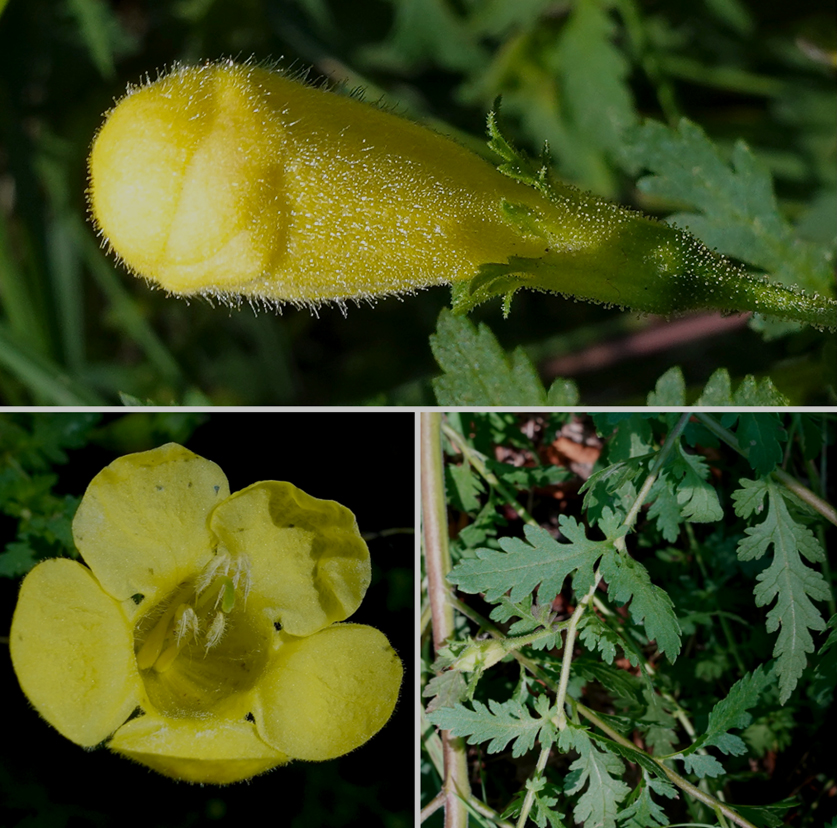Two weeks ago, I stumbled upon a phenomenal find in the Arboretum: a fern-leaved false foxglove (Aureolaria pedicularia), a biennial hemiparasite whose roots hook up to oak tree roots and steal water and nitrogen (but probably not carbon). The bright yellow flowers in bud (upper image) and in bloom (lower left image) were a welcome surprise. It seems unlikely that a huge oak tree would notice a bit of missing water and nitrogen moving over to a small herbaceous plant or two. However, a small herbaceous plant hooked into the giant oak tree could reap significant benefits through this thieving arrangement.

According to Andrew Gapinski, Director of Horticulture, the last time this species was recorded at the Arnold Arboretum was nearly a century ago, in 1925, on the southwest side of Hemlock Hill, by none other than E.J. Palmer. Palmer—who would live in the Arboretum farmhouse on Centre Street and work for the Arboretum for 35 years—was an astute botanical collector. My find was on the southeast side of Hemlock Hill, and for all we know, this modest herbaceous species has been quietly kicking around in small numbers on Hemlock Hill, largely unobserved for millenia.
Full-on parasitic plants (holoparasites) such as beechdrops (which can be seen under many a beech at the Arboretum right now) and Indian pipe (which can also be found at the Arboretum) steal all of their organic carbon from their hosts and lack the ability to produce chlorophyll and photosynthesize. The fern-leaved false foxglove (which is in the same family, Orobanchaceae, as beechdrops) is perfectly green (lower right image of its “fernlike” leaves) and can still make its own sugars. As for whether its flowers most resemble foxgloves, I will defer to others (they look more like a monkey flower to me).
To have a gander, take the footpath along the base of Hemlock Hill that parallels South Street from South to North and keep an eye out on the left. The small patch of plants is still in flower. Please don’t pick. (If you crave more Arnold Arboretum plant images, follow me on Instagram @nedfriedman.)
